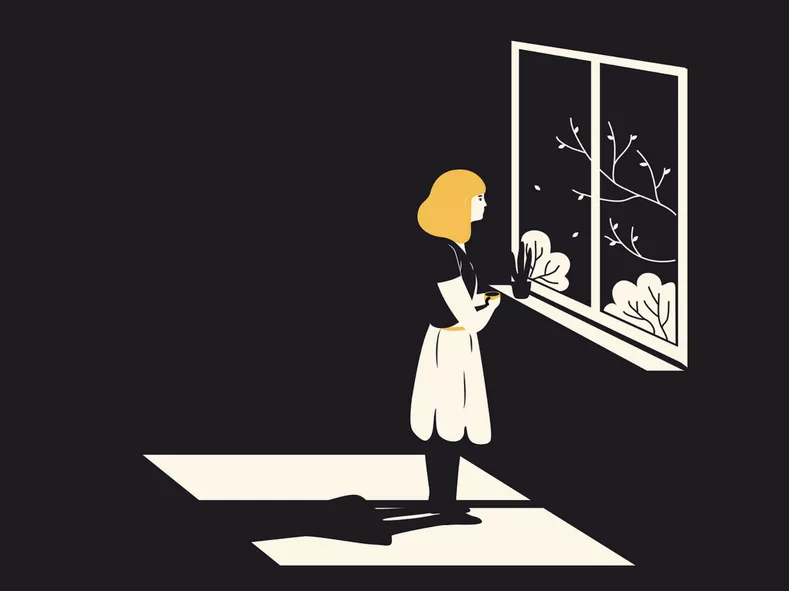Depression can be costly in terms of paying for treatment and the costs you bear for work, personal relationships and social circles.

Image Source: Pixabay
There is no one clinical definition of depression. However, the Diagnostic and Statistical Manual of Mental Disorders (DSM-5), published by the American Psychiatric Association, defines depression as a mood disorder that causes a persistent feeling of sadness and loss of interest. Depression can also cause physical symptoms such as fatigue, insomnia, and weight loss or gain.
There are a few things that make this definition of depression unique. First, it is essential to note that depression is classified as a mood disorder. A mental health condition can impact an individual's mood, thoughts, and behaviors. In addition, the DSM-5 states that depression can cause physical symptoms such as fatigue, insomnia, and weight loss or gain.
This is significant because it underscores the fact that depression is not just a mental health condition but one that can also have physical manifestations. Finally, the DSM-5 notes that depression can cause a persistent feeling of sadness and loss of interest. This symptomatology can impact an individual's ability to function daily, which is why we should take depression seriously.
Evaluating Treatment Costs
Standard treatments for depression include medication and therapy. Provided the patient is covered by insurance, many SSRIs, SNRIs, and tricyclic medications are relatively affordable, if not free (copays and deductions notwithstanding). Psychotherapy is an integral component of treating depression. The cost of online therapists may also be included as a complimentary service with many health insurances plans.
Telemedicine is widely popular with companies like MD Live, Teladoc, and BetterHelp. Therapists with these network providers can charge anywhere from $50 per session, upwards of $125 per session. Payments are shared with the providers.
Other treatment options, including TMS for depression, vary widely in cost. For example, a study conducted in Miami found the price to be approximately $300 per session, but this varies from one provider to the next. TMS for depression is also widely covered by insurance in the United States, and often times most patients just pay the co-pay. By using electromagnetic coils, transcranial magnetic stimulation targets specific areas of the brain thought to be responsible for depression.
Working on the prefrontal cortex region, these impulses vary in intensity depending on the severity of the depression. Patients are tested for their motor threshold with a movement of the finger/hand with the electrical impulses. The doctors, for maximum effectiveness, then formulate a treatment regimen.
- Patients sit in a treatment room in a reclining chair.
- The TMS coil is placed against the forehead (for traditional TMS; Deep TMS utilizes a patented helmet with coils inside) and generates a series of stimulating pulses.
- The magnetic dose is determined by toggling the amount of energy until fingers/hands twitch. This is known as the motor threshold, and patients are mapped specific to their needs
- TMS therapy can last up to 30 minutes per session, five sessions per week, for 4-6 weeks.
Is there a Personal Cost to Depression?
The answer is as clear as day. Most definitely. Depression can take a massive toll on a person's quality of life. It can cause them to lose interest in activities they once enjoyed, make it difficult to concentrate, and lead to social isolation. It can also cause problems in relationships and make it hard to perform at work.
In severe cases, it can lead to suicidal thoughts or attempts. Depression is a serious mental illness that can profoundly affect a person's life. It is not something that a person can "snap out of." It requires treatment and support from family, friends, and mental health professionals.
The exact costs are not clear, but they are significant. One way to look at it is to consider the amount of money that is spent on mental health services in general. In the United States, it is estimated that at least $201 billion+ a year is spent on mental health services every year.
This includes psychiatric medication, therapy, and hospitalization. A significant portion of this amount is likely spent on treating depression. Since depression is associated with many other mental health disorders, it's essential to understand its gravity fully.
What Economic Costs Can Depression Bring to Bear?
The cost of treating depression will vary depending on the severity of the condition and the course of treatment recommended by the patient's mental health professional. In general, however, treating depression can be pretty expensive. The average cost of psychiatric medication is $200 per month, and the average cost of therapy is $100+ per session. But these costs vary widely from patient to patient. For example, much higher costs are borne by patients in states like New York and California with their attendant increased costs of living.
Of course, the costs of treating depression must also factor in new-age treatments such as Deep TMS, VNS, DBS, and other cutting-edge options. Each treatment center and type determine the overall cost burden; for example – certain TMS centers in New York charge high upfront fees and additional session fees. VNS is an expensive procedure that costs more than $15,000-$30,000. DBS is even costlier, with prices of $30,000-$100,000. These are only a few examples, and the costs will continue to increase as technology advances.
Costs must also factor in opportunity costs - i.e., the foregone income streams due to agonizing through depression. In addition, a patient's work performance will almost certainly suffer; in some cases, they may have to take leave or even be let go from their job. And, of course, the costs to society are also high. The economic cost of untreated mental illness in the United States is estimated to be hundreds of billions of dollars every year.
More By This Author:
Playtika Completes $600M Share Repurchase
Using SEC Form 13F to Track Warren Buffett’s Trades
Webull: A Great New Investment App Or "Cr"app?



